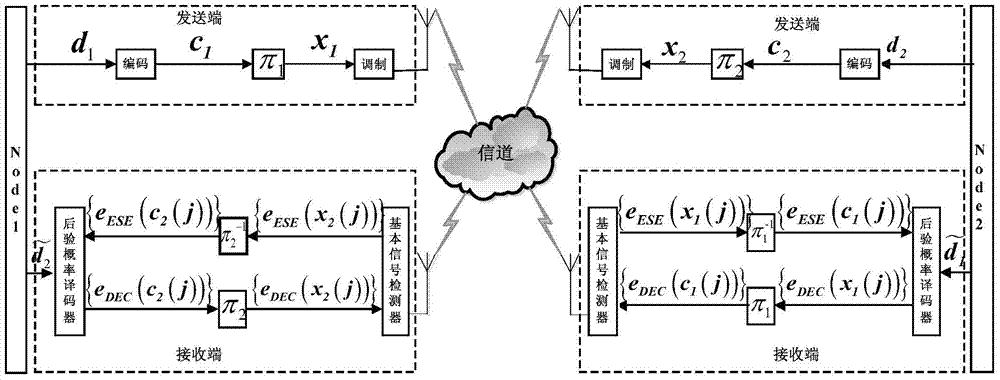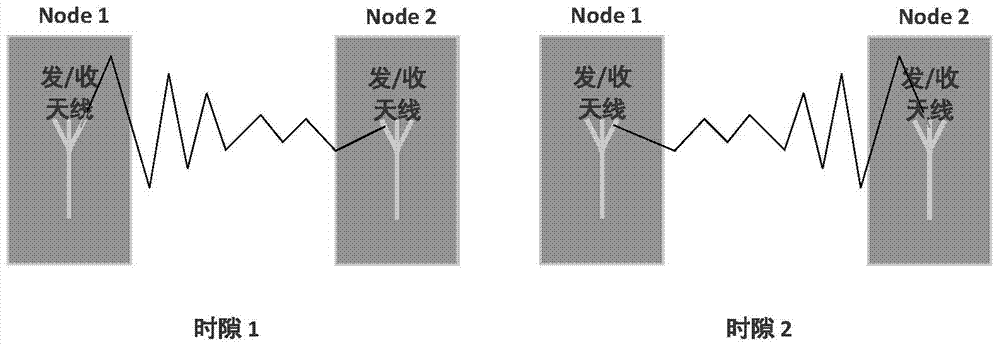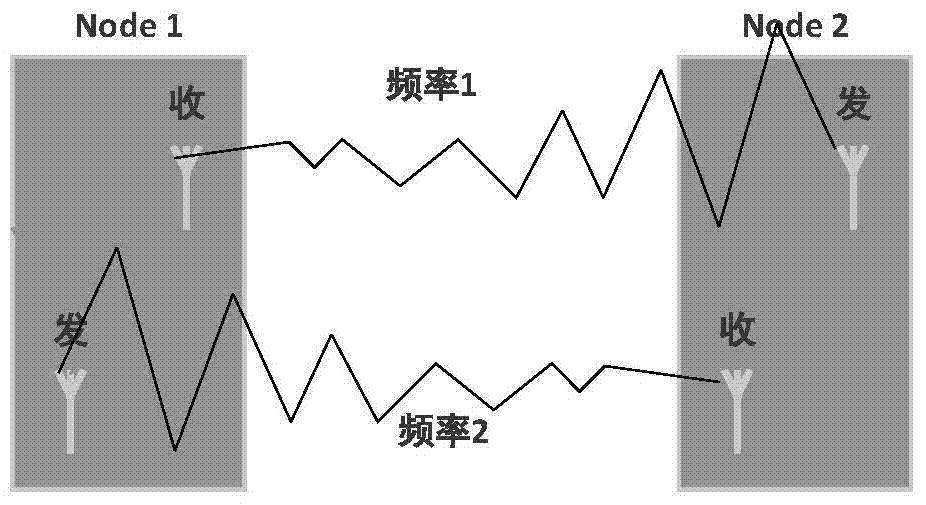Self-interference-elimination method of equal-frequency simultaneous full-duplex system based on interleave and iterative decoding
A self-interference cancellation and iterative decoding technology, applied in the field of self-interference cancellation, can solve the problems of data transmission rate and spectrum utilization efficiency not reaching, receiving antenna self-interference, etc.
- Summary
- Abstract
- Description
- Claims
- Application Information
AI Technical Summary
Problems solved by technology
Method used
Image
Examples
specific Embodiment approach 1
[0019] Specific implementation mode one: the self-interference cancellation method of the same-frequency simultaneous full-duplex system based on interleaving and iterative decoding in this embodiment is implemented in the following steps:
[0020] Assume that the information sequences sent by the two nodes are respectively d 1 , d 2 , which is encoded into c 1 ,c 2 , and then use an independent and random interleaver π for each node 1 , π 2 will c 1 ,c 2 interweave to form x 1 ,x 2 , put x 1 ,x 2 After modulation, it is sent out through the sending end of each channel, and the receiving end of the channel performs iterative decoding chip by chip to obtain useful signals;
[0021] Wherein, the attenuation coefficient of each channel is h 1 ,h 2 , assuming that each channel is a Rayleigh fading channel, the iterative decoding part is divided into an elementary signal detector ESE and a posterior probability decoder DEC.
[0022] The effect of this implementation mo...
specific Embodiment approach 2
[0027] Specific embodiment two: the difference between this embodiment and specific embodiment one is: the output of the basic signal detector ESE and the posterior probability decoder DEC is about x k (j) and c k (j) The extrinsic log-likelihood ratio LLR of (k=1,2), which is defined as follows:
[0028] e ESE ( x k ( j ) ) = log ( Pr ( y | x k ( j ) = + 1 ) Pr ( ...
specific Embodiment approach 3
[0040] Specific implementation mode three: the difference between this implementation mode and specific implementation mode one or two is that: the iterative decoding performed by the channel receiving end chip by chip is specifically:
[0041] Step 1: First calculate x k Mean and variance of (j)
[0042] E ( x k ( j ) ) = exp ( l ~ ESE ( x k ( j ) ) ) - 1 exp ...
PUM
 Login to View More
Login to View More Abstract
Description
Claims
Application Information
 Login to View More
Login to View More - R&D
- Intellectual Property
- Life Sciences
- Materials
- Tech Scout
- Unparalleled Data Quality
- Higher Quality Content
- 60% Fewer Hallucinations
Browse by: Latest US Patents, China's latest patents, Technical Efficacy Thesaurus, Application Domain, Technology Topic, Popular Technical Reports.
© 2025 PatSnap. All rights reserved.Legal|Privacy policy|Modern Slavery Act Transparency Statement|Sitemap|About US| Contact US: help@patsnap.com



